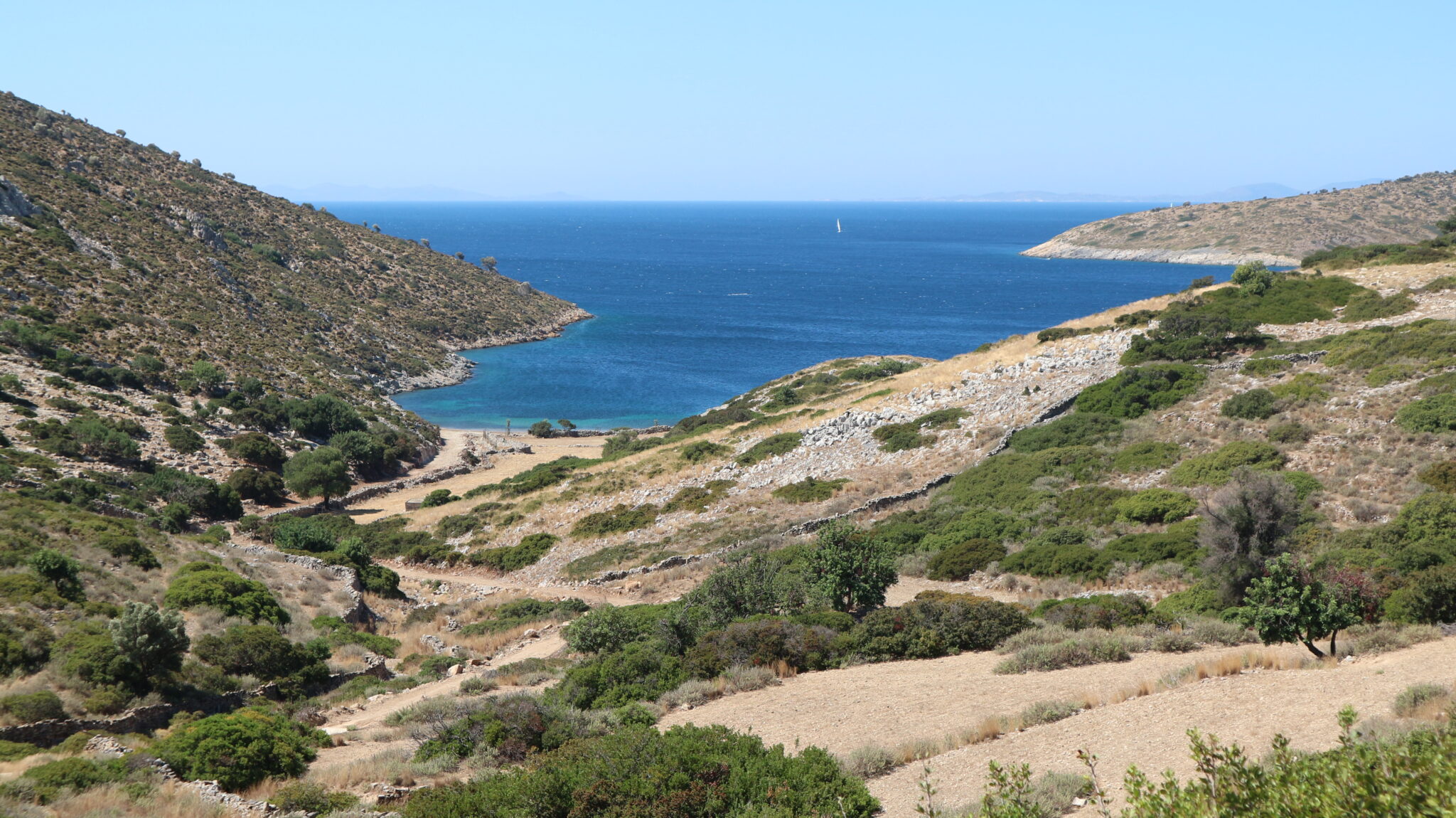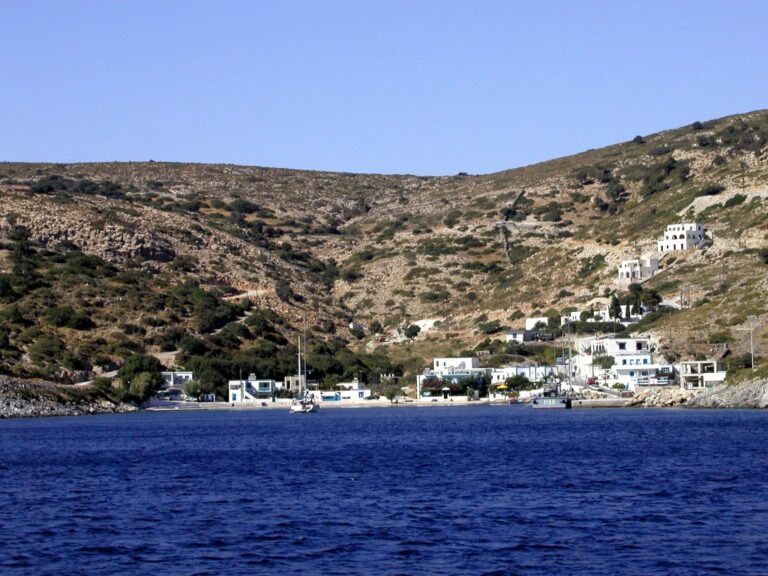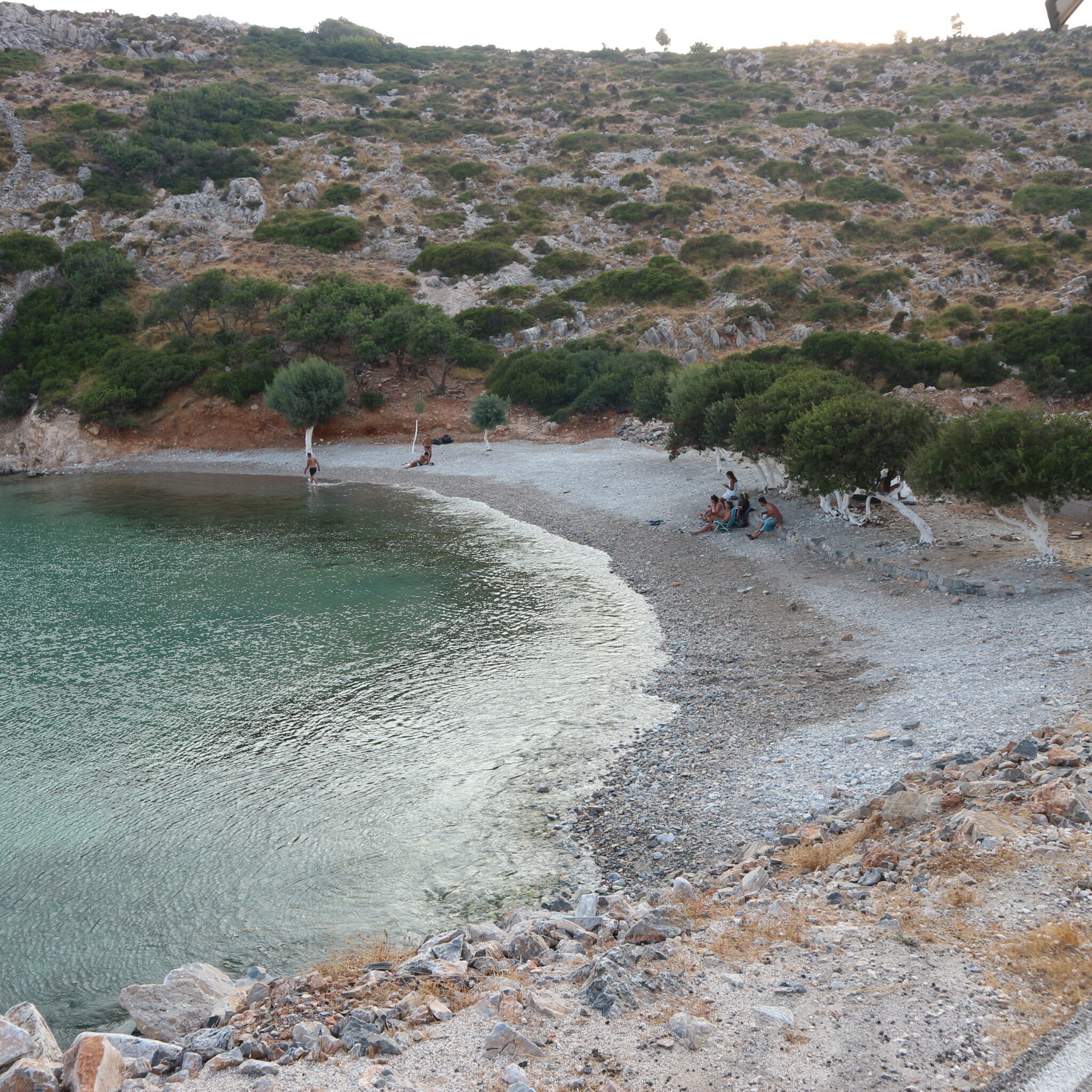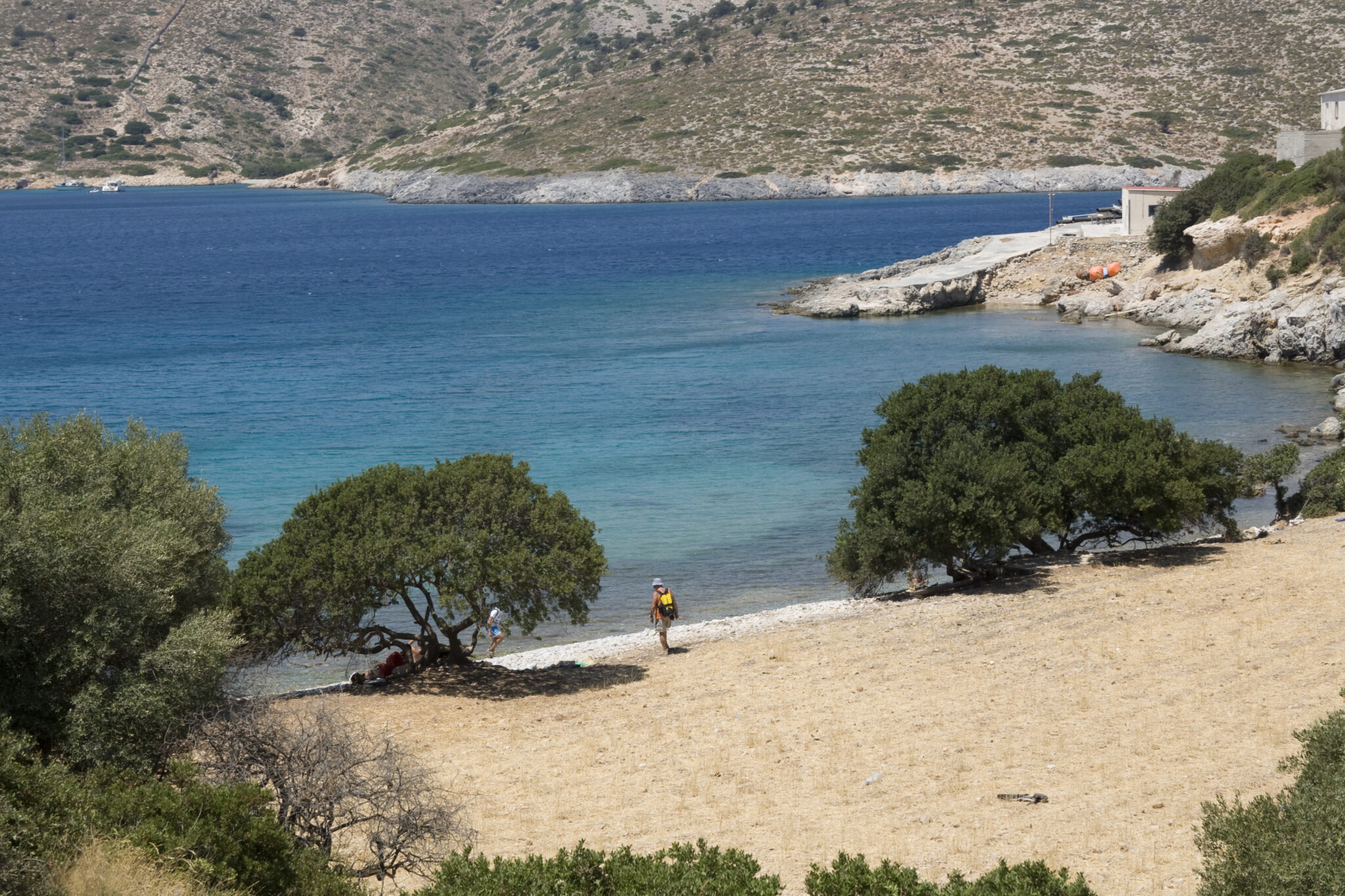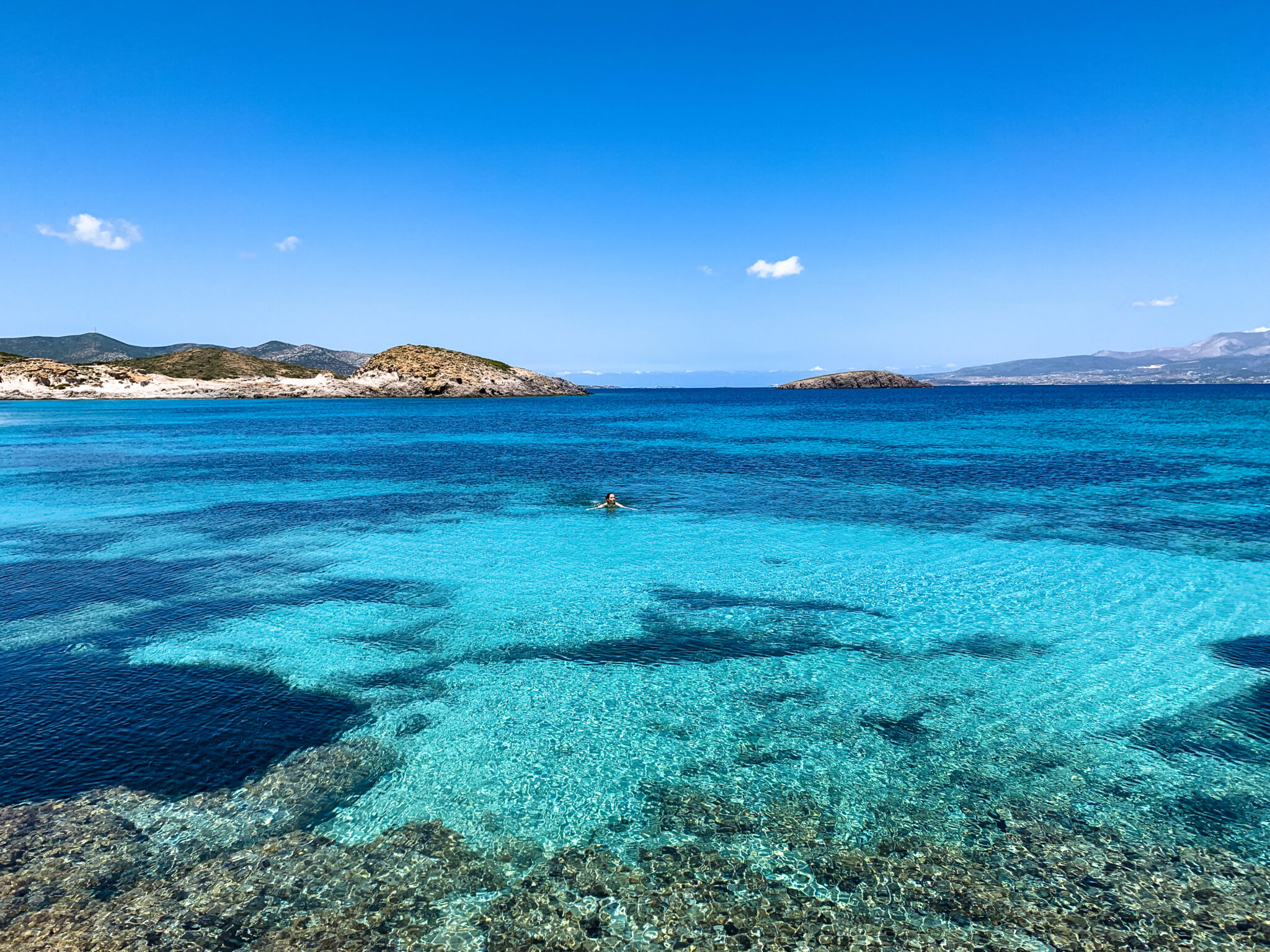Agathonisi is a small, peaceful island located in the Aegean Sea, known for its unspoiled beauty and traditional Greek way of life. With a population of just a few hundred people, the island is almost traffic-free and the locals live mainly off fishing and the handful of tourists who visit the island every summer. The islanders have often gone through hardships due to poverty and isolation and did not get electricity and telephone lines until the 1980s. But the islanders are warm and friendly and will make you feel at home as soon as you arrive.
The island has three settlements: Katholiko, a practically abandoned fishing village; Megalo Chorio, the largest and oldest village with 100 inhabitants; and Mikro Chorio, a smaller village with 25 inhabitants and are made up of charming clusters of white-washed houses with blue doors and shutters, and narrow streets lined with colourful bougainvillea.
The main village has a small harbour where fishing boats and yachts anchor, and a few Tavernas serving traditional Greek dishes. The island’s rugged landscape is dotted with olive groves and pine forests, and its cerulean waters are perfect for swimming and snorkeling.
Experience the island’s rich cultural heritage by visiting during the Feast of the Assumption of Mary, held on August 15th each year, or visit the Folklore Museum to learn about Agathonisi’s history and traditions. You can also taste local produce at the Farmers Market, visit an olive grove or vineyard, or cook with supplies from the island’s small grocery stores.
For a unique experience, take a 15-minute walk from the Church of Agios Ioannis to that of Agios Haralambos, from where you can see all the way to Samos, Ikaria, and Fourni in the north and to Leros and Kalymnos in the south.
Where to swim
Spilia Beach: The shore is a combination of sand and fine pebbles and you can find coolness and shade in the tamarisk trees near the seductive, crystal-clear waters. At some point, you’ll probably be joined by wild goats coming down to drink water from the sea, their bells breaking the hypnotic sound of the sea’s ripples.
Gaidourolakos: Also called Gaidouravlakos, it’s considered to be of the most stunning beaches on the island. It’s covered in pebbles, has turquoise waters and is framed by large rocks. The beach can only be reached by boat, or by climbing the hill from the Spilia side and descending to Gaidourolakos from the other side (around 30 minutes).
Poros: The small, attractive beach with shallow turquoise waters, covered with fine sand is a rarity on the island as almost all the others have fine pebbles. Here, you can indulge in the shade of the tamarisk trees and even camp out.
Vathi Pigadi: Also a small beach. To reach it, follow the road past Poros beach and walk across a small estate. The shore is covered with pebbles and has clear turquoise waters. You will find natural shade from the tamarisk trees and it’s ideal for diving and snorkelling.
Tsangaris: A beach of wild beauty covered in large pebbles. Be careful, because sea urchins lie among stones on the seabed.
Agios Georgios: An organised beach with all the basic infrastructure such as rooms to let, tavernas and cafes. The beach has a combination of sand with fine pebbles and its waters are sparklingly clear.
Katholiko: A harbour where fishing boats and small boats moor. Fish farms have been placed between Katholiko and Nero islet.
Mikro & Megalo Ammoudaki: These beaches are located on the southeastern side of Megalo Chorio. Access is difficult as there is no marked path and no signposted road. The beaches are ideal for diving and underwater fishing.



